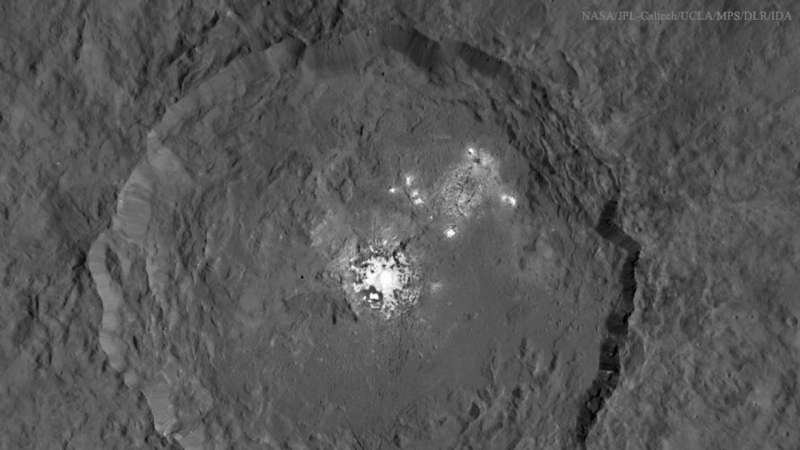Explanation: What created these bright spots on Ceres? The spots were first noted as the robotic Dawn spacecraft approached Ceres, the largest object in the asteroid belt, in February, with the expectation that the mystery would soon be solved in higher resolution images. However, even after Dawn arrived at Ceres in March, the riddle remained. Surprisingly, although images including the featured composite taken in the last month do resolve many details inside Occator crater, they do not resolve the mystery. Another recent clue is that a faint haze develops over the crater's bright spots. Dawn is scheduled to continue to spiral down toward Ceres and scan the dwarf planet in several new ways that, it is hoped, will determine the chemical composition of the region and finally reveal the nature and history of the spots. In several years, after running out of power, Dawn will continue to orbit Ceres indefinitely, becoming an artificial satellite and an enduring monument to human exploration.
Yearly Astronomy Review:
APOD editor to speak in January in
Philadelphia
and
New York City
1999 2000 2001 2002 2003 2004 2005 2006 2007 2008 2009 2010 2011 2012 2013 2014 2015 2016 2017 2018 2019 2020 2021 2022 2023 2024 2025 |
Yanvar' Fevral' Mart Aprel' Mai Iyun' Iyul' Avgust Sentyabr' Oktyabr' Noyabr' Dekabr' |
NASA Web Site Statements, Warnings, and Disclaimers
NASA Official: Jay Norris. Specific rights apply.
A service of: LHEA at NASA / GSFC
& Michigan Tech. U.
|
Publikacii s klyuchevymi slovami:
Ceres - Cerera
Publikacii so slovami: Ceres - Cerera | |
Sm. takzhe:
Vse publikacii na tu zhe temu >> | |
